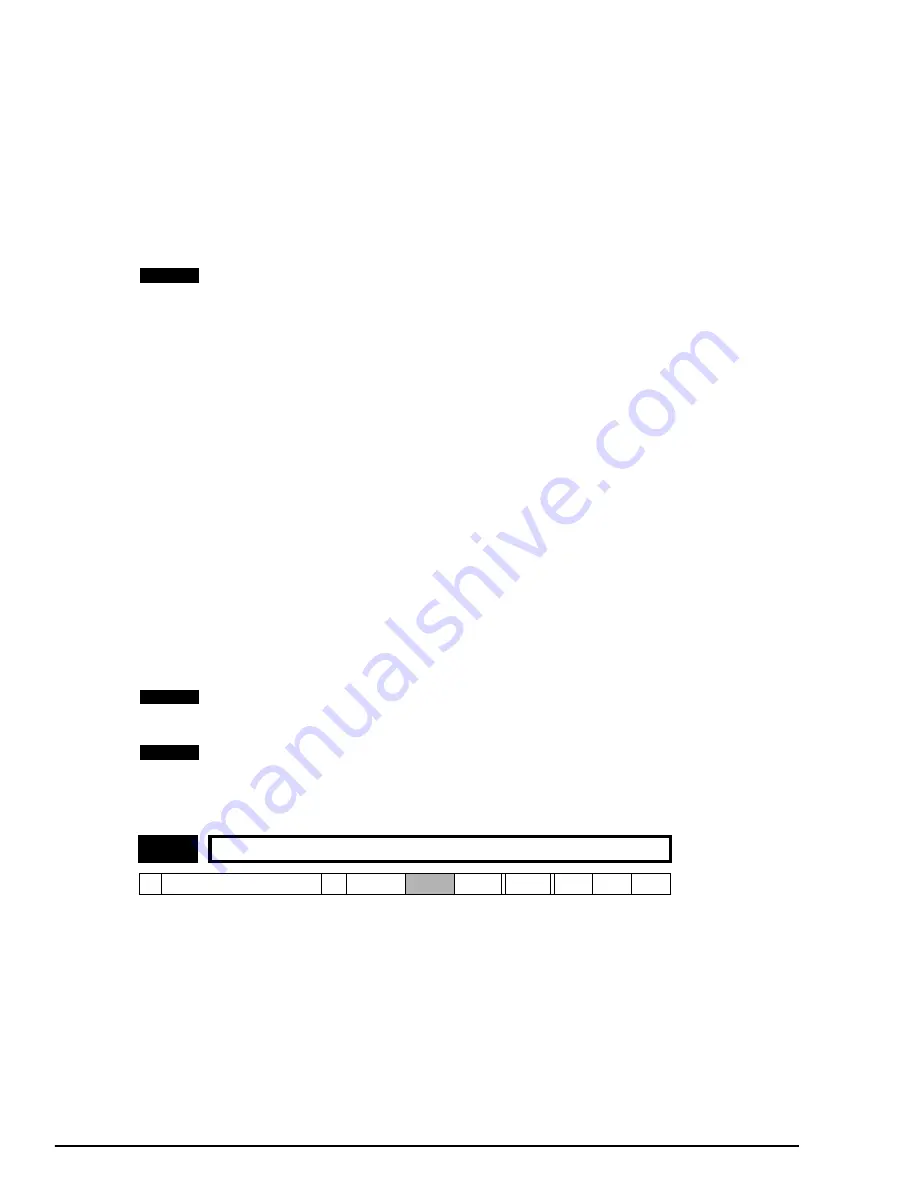
46
Commander SE Advanced User Guide
Issue Number: 4
Autotune Procedure
Before a non-rotating static autotune is carried out, the drive’s motor map parameters should be correctly set:
Parameter
5.07
- motor rated current
Parameter
5.08
- motor rated full load rpm
Parameter
5.09
- motor rated voltage
Parameter
5.10
- motor power factor
Before a rotating autotune is carried out, additional parameters should be correctly set (this is only true if the motor is not a
standard 50/60Hz motor).
Parameter
5.06
- motor rated frequency
Parameter
1.06
- maximum speed
Although parameter
5.12
is defaulted to ‘no autotune’, on the very first power up, Enable and Run command of the drive after
delivery from the factory, the drive will initiate a non-rotating static autotune. After this test, the autotune will be dependent on
the value set in parameter
5.12
. The results of this test will depend on what is connected to the drive’s motor terminals.
When default parameters are set (see parameter 11.43) the first time the drive is given an Enable and Run command,
a non-rotating autotune will be initiated.
No motor connected
With no motor connected, the drive will trip on ‘rS’ which indicates a stator resistance measurement failure, this will be stored
by the drive as zero ohms. The trip can be reset and the drive run as normal. If the drive is powered down and then back up,
after an enable and run signal, it will again perform a non-rotating static autotune and trip on ‘rS’.
Motor connected but stator resistance higher than allowable value
The drive will again trip on ‘rS’ if the stator resistance being measured is greater than the drive’s internal maximum limit. This
can happen if a star connected motor is connected to a 200V Commander SE or a motor of a lower kW rating is connected to
a larger kW Commander SE. In this case, the drive will store the maximum allowable stator resistance for that size of drive. If
the drive is powered down and then back up, after an enable and run signal, it will not perform another autotune.
Motor connected but current levels required for successful autotune not reached
The drive will trip on ‘rS’ if the current levels required to measure the stator resistance are not reached in the allowable test
time, this will be stored by the drive as zero ohms. This can occur because a combination of stator resistance and motor
voltage prevents the required current levels being reached. If the drive is powered down and then back up, after an enable
and run signal, it will again perform a non-rotating static autotune.
The current levels required for a successful autotune are both half and full motor rated current (parameter
5.07
). Two
measurements are taken to ensure accurate results.
Important Notes:
It is important to ensure that the motor wiring configuration is correct (i.e. Star / Delta) before performing an
autotune.
If any changes are made to the drive’s motor map parameters, system wiring, motor wiring configuration or motor
type, the drive must be re-autotuned to the motor. Not performing another autotune will result in poor motor
performance, OI.AC or IT.AC trips.
0
Fixed linear voltage to frequency ratio (constant torque - standard load).
1
Voltage to frequency ratio dependant on load current (dynamic / variable torque - fan / pump load).
5.13
Variable V to F select
Ú
0 or 1
Ö
0
RW
Bit
NOTE
NOTE
NOTE
















































